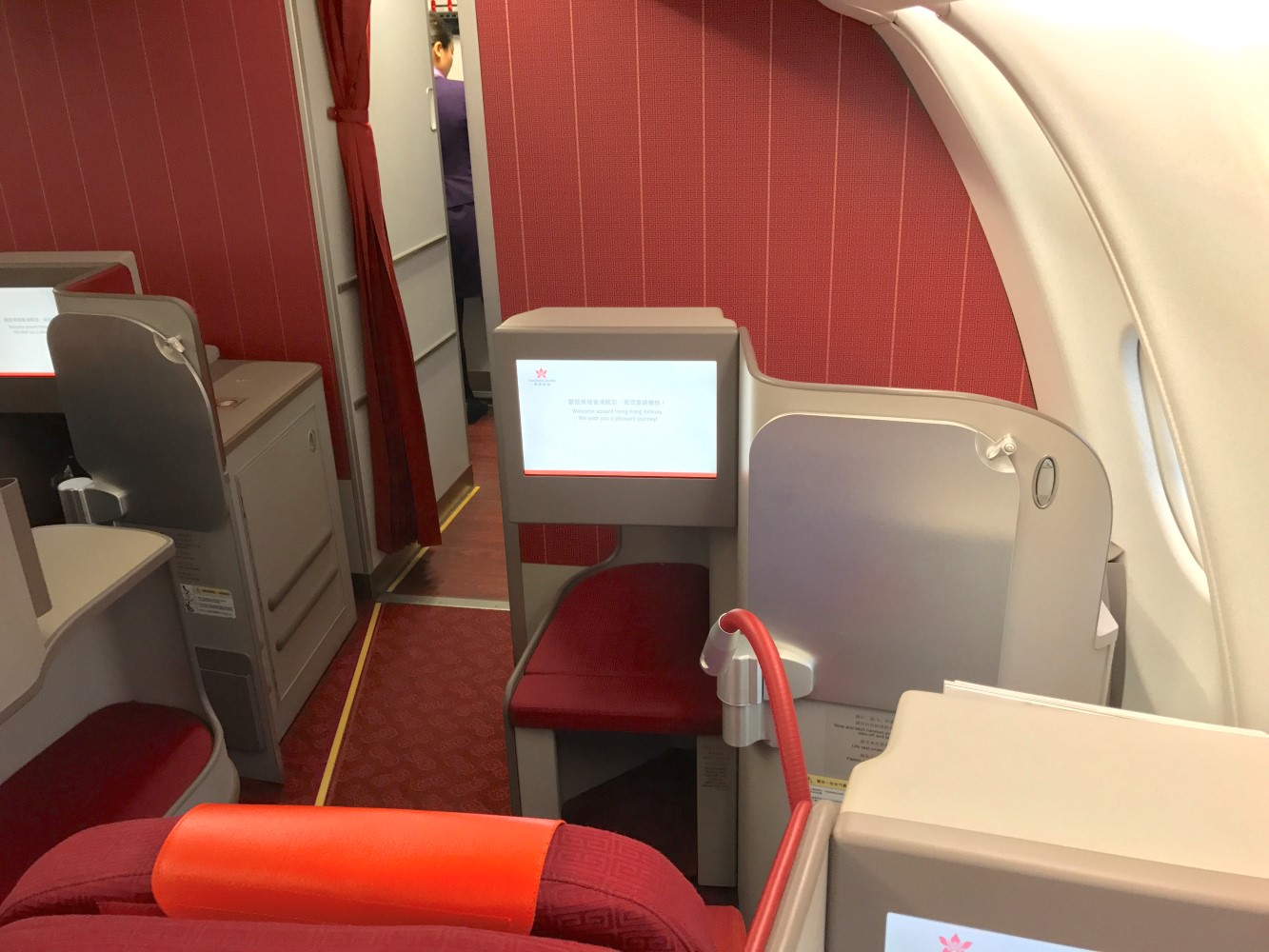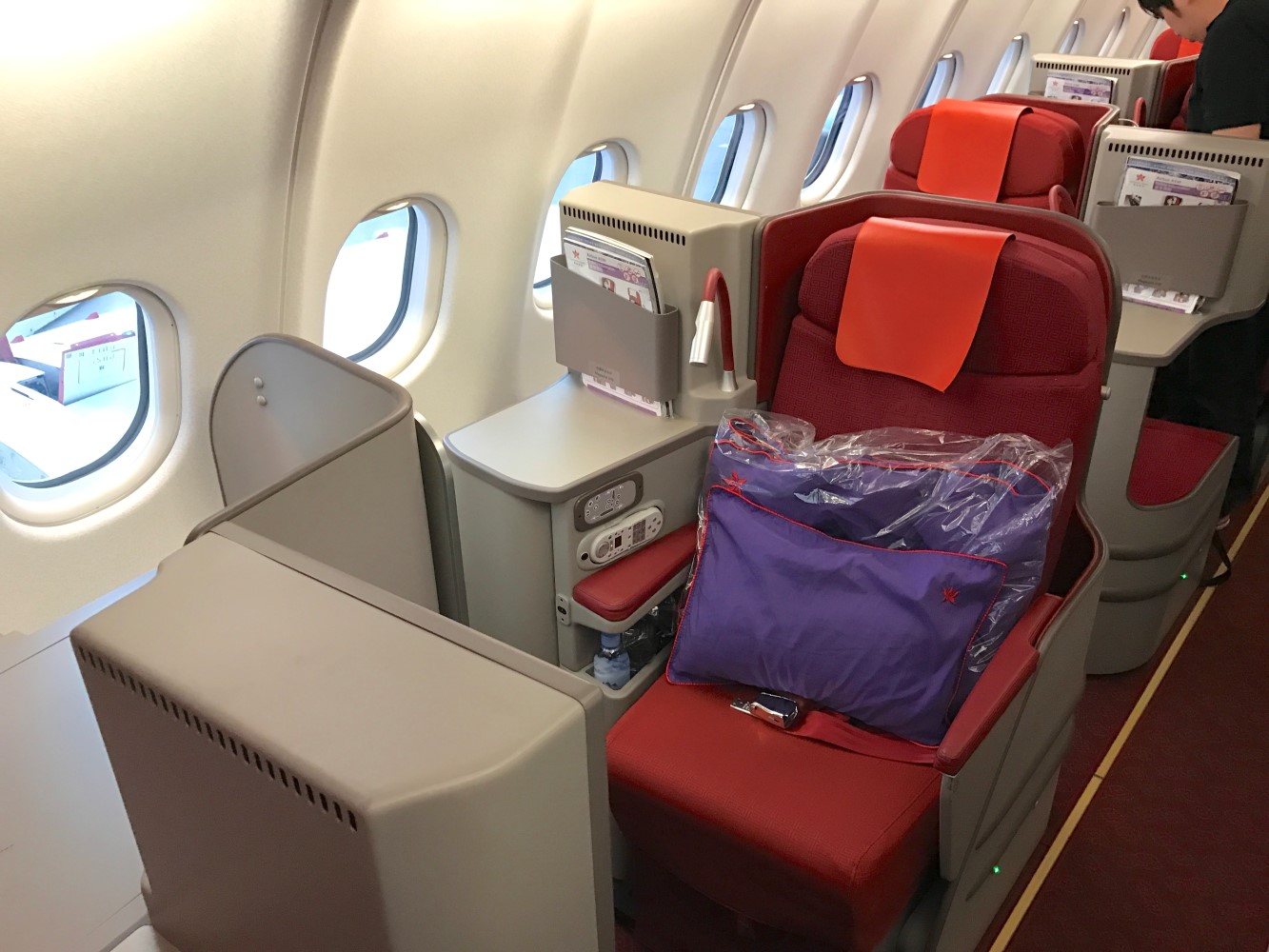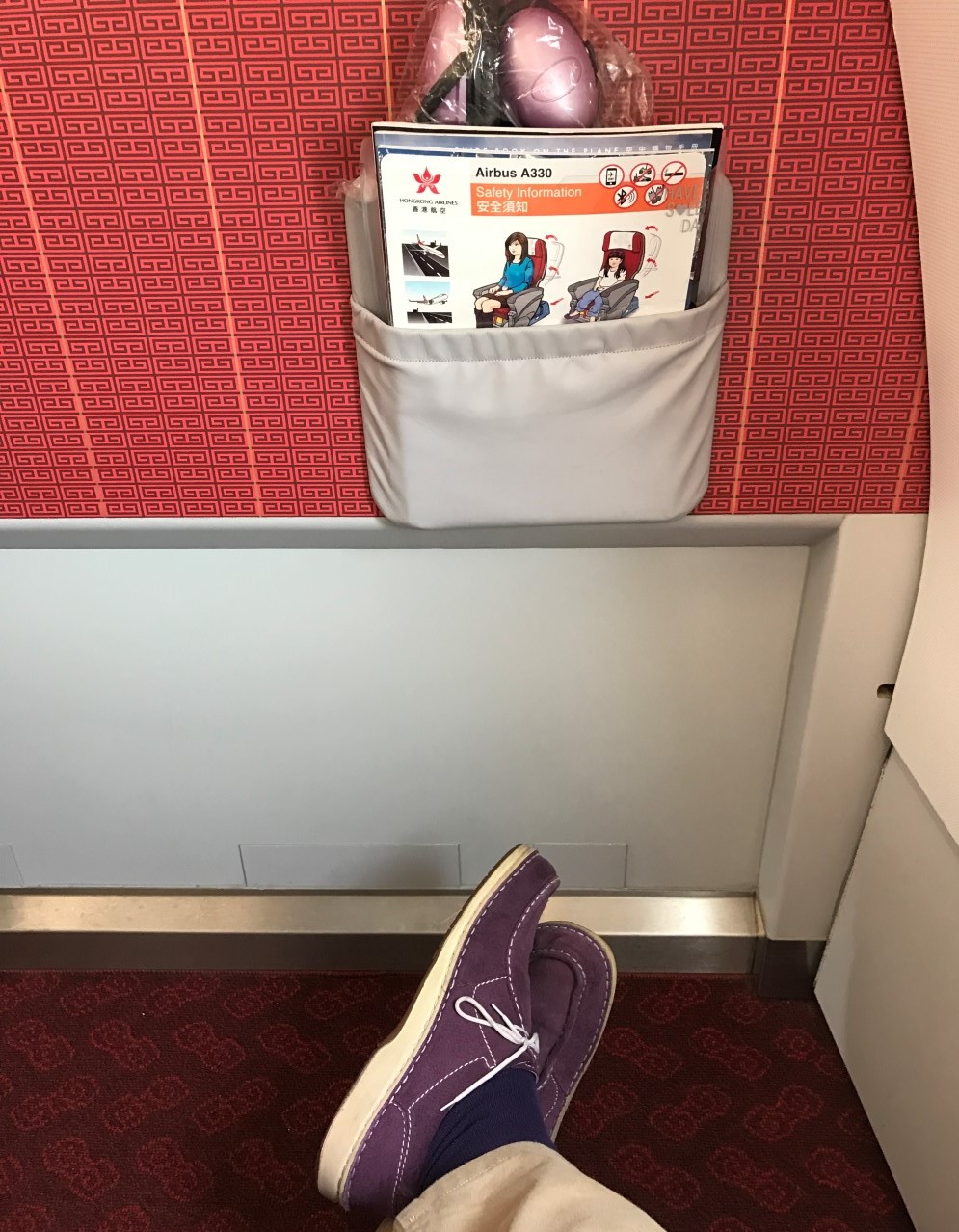 It’s no secret that Hong Kong Airlines, the HKG-based arm of Hainan Airlines parent HNA Group, has expansion plans around the Asia-Pacific region. With eight further Airbus A330s and twenty A350s on order, the airline will more than double its fleet over the short term. As part of that expansion, the airline is both refitting aircraft with older product and planning to take delivery of new jets with new seats.
It’s no secret that Hong Kong Airlines, the HKG-based arm of Hainan Airlines parent HNA Group, has expansion plans around the Asia-Pacific region. With eight further Airbus A330s and twenty A350s on order, the airline will more than double its fleet over the short term. As part of that expansion, the airline is both refitting aircraft with older product and planning to take delivery of new jets with new seats.
First, the Airbus A330-200 angled lie-flat seats that failed to impress on the Hong Kong-Auckland route are on the way out, the airline’s general manager of service delivery Chris Birt tells me.
“Our average fleet age is 4.6 years, so they’re certainly still new aircraft, and we intend to keep them for some time,” Birt says. “They were delivered without a flatbed product and whilst that is absolutely fine from a regional perspective, our ambition is to offer a flatbed product on all of our twin-aisle fleet. Later this year we will start to retrofit the business class cabins so we can offer a more consistent product for the customer in business class. They will be retrofitted with the B/E Diamond seat. It keeps the seat count the same, but we believe it will offer a much more comfortable, consistent experience for the customer.”
The Diamond product, of course, is nearing its tenth birthday, so why is it still so popular, I asked.
“We went through a detailed selection process with all of the main manufacturers,” Birt says, “and we were looking at the time for a long-haul product for the A350. We were looking for a product that still offered flatbed but was more suitable for shorter flights and regional product. We found that whilst there are some fantastic products on the market, B/E offered a suitable product for both of those markets, and we believe helped us achieve the commercial seat count that we were looking for, offered the customer a product that is proven with other carriers – they’re both popular seats – and would offer us what we were looking for in terms of seat count, customer experience, the full flatbed product. It wasn’t a case of, was there anything wrong with the others, it was more that we felt that both of those B/E products work well together and would offer an element of consistency across the fleet.”
Despite its success, Diamond can be accused of looking a little samey. I put it to Birt that, for example, it would be almost impossible to differentiate between the dark-blue-and-grey seats of the three major US international carriers’ Boeing 757 Diamond product, were it not for Delta’s recent waffling of the seatback leather. In that context, how does an airline differentiate itself from another carrier offering a similar product?
“A lot of ours is around the trim and finish,” Birt says. “This is giving us the opportunity to design and launch our own brand in the cabin, our own cabin interior. Much of the customization that we’re doing with the seat supplies is around trim and finish, new seat fabrics, leather in parts, laminates for the tables. It’s more around the look, the trim, and the finish that I think will differentiate our product to another carrier that may have the same seat.”
Part of that, indeed, is differentiating from the other carriers of the HNA Group — hometown sibling Hong Kong Express, Hainan Airlines and the other ten carriers under the same umbrella. And, for Hong Kong Airlines, that means Hong Kong.
“It’s both in the cabin design and in some of the product developments that we’ve got coming up,” Birt tells me. “We are a Hong Kong airline, and we’re very keen to represent our home base, Hong Kong, not just to the local customer but to the international customer as well. We’ve got some ideas to support some local art which we’re exploring at the moment. We’ve just launched our new business class amenity kit, which represents icons of Hong Kong such as the Star Ferry and the tram, and we’ve worked with a local designer on that. We’re very keen to work with local companies, local designers, local suppliers, to help bring the Hong Kong brand and really establish the Hong Kong Airlines brand.”
New cabins and seats — especially in the context of Cathay Pacific testing out a new regional product while also continuing to see problems with delivered Zodiac Cirrus A350 seats — may prove a winning combination for an airline clearly trying to up its #PaxEx game.

Part of Hong Kong Airlines’ changes will be to swap out the signature HNA bulkhead. Image: John Walton
Related Articles:










